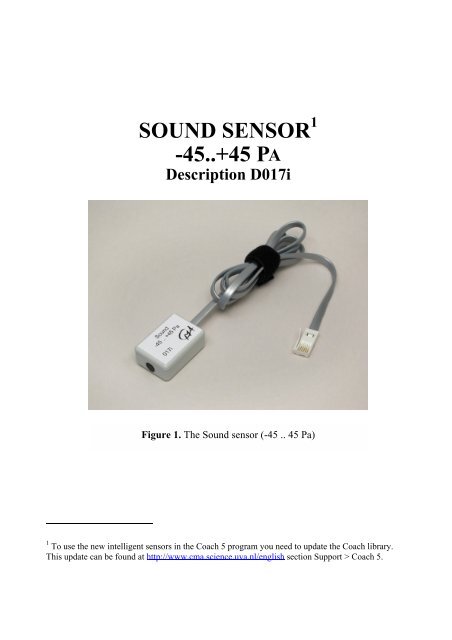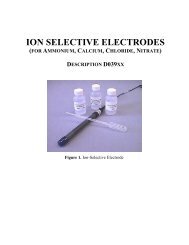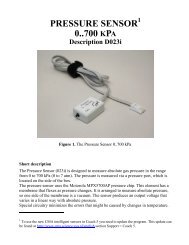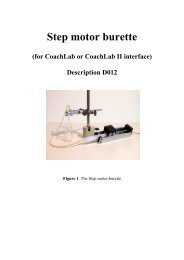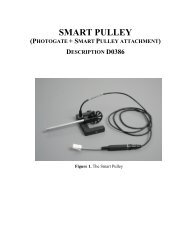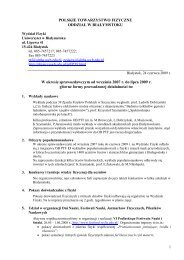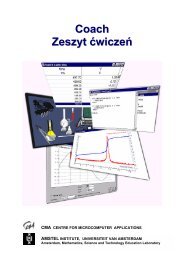Figure 1. The Sound sensor (-45 .. 45 Pa)
Figure 1. The Sound sensor (-45 .. 45 Pa)
Figure 1. The Sound sensor (-45 .. 45 Pa)
Create successful ePaper yourself
Turn your PDF publications into a flip-book with our unique Google optimized e-Paper software.
<strong>Figure</strong> <strong>1.</strong> <strong>The</strong> <strong>Sound</strong> <strong>sensor</strong> (-<strong>45</strong> .. <strong>45</strong> <strong>Pa</strong>)<br />
1 To use the new intelligent <strong>sensor</strong>s in the Coach 5 program you need to update the Coach library.<br />
This update can be found at http://www.cma.science.uva.nl/english section Support > Coach 5.
Short description<br />
<strong>The</strong> <strong>Sound</strong> Sensor (017i) is a microphone followed by an internal amplifier. This<br />
microphone is mounted at one end of the box. <strong>The</strong> <strong>sensor</strong> measures variations in air<br />
pressure caused by a sound wave. Because of the high sensitivity, the <strong>sensor</strong> is very<br />
much suited to detect short pressure pulses. This offers the possibility to measure the<br />
speed of sound.<br />
<strong>The</strong> sound sources that can be used with the microphone are tuning forks, electronic<br />
keyboards, and musical instruments. You may also investigate a human voice or a<br />
whistle. When you use the sound <strong>sensor</strong> make sure the sound level is in the correct<br />
range to produce good wave patterns. If the sound is too loud, the wave pattern will be<br />
“clipped off” at the top or bottom. In such a case move the microphone further from the<br />
sound source, or turn down the volume of the sound.<br />
Within a certain range, the <strong>sensor</strong> can also be used for dB-measurements. It can be<br />
done in one of the following ways:<br />
<strong>1.</strong> determining the average sound pressure p (root mean square average) and<br />
calculating the sound pressure level in decibels from:<br />
L p =20 log (p/p 0 ) where p 0 = 2.5x 10 -5 <strong>Pa</strong><br />
2. measuring the output of the <strong>sensor</strong> via a rectifying circuit and calibrating readings<br />
in decibels (calibrating with a calibrated decibel-meter).<br />
<strong>The</strong> sound <strong>sensor</strong> is equipped with a BT-plug and can be connected to the following<br />
CMA interfaces:<br />
• ULAB<br />
• CoachLab II<br />
Furthermore the <strong>sensor</strong> can be used in combination with other interfaces, like Texas<br />
Instruments CBL, CBL2 and Vernier LabPro without the need of an adapter.<br />
Intelligent <strong>sensor</strong> 2<br />
<strong>The</strong> sound <strong>sensor</strong> is an intelligent <strong>sensor</strong>. <strong>The</strong> <strong>sensor</strong> has a memory chip with<br />
information about the <strong>sensor</strong>. Through a simple protocol (I 2 C) the <strong>sensor</strong> communicates<br />
with ULAB and transfers its data (name, quantity, unit and calibration) to the<br />
datalogger. ULAB automatically displays the calibrated values on its screen. Also<br />
ULAB communicates the information to the Coach software.<br />
<strong>The</strong> <strong>sensor</strong> is delivered with a standard calibration.<br />
2 At this moment only for CMA ULAB datalogger, in the future also for LabPro and the CBL2.<br />
2
Suggested experiments<br />
<strong>The</strong> sound <strong>sensor</strong> can be used in a variety of experiments with sound waves such as:<br />
• measure wave patterns (frequency and amplitude of sound)<br />
• demonstrate beat patterns<br />
• compare waveforms from various musical instruments<br />
• measure the speed of sound through air and other materials<br />
• display the Fourier transform (FFT) of a sound.<br />
Calibration<br />
<strong>The</strong> output of the sound <strong>sensor</strong> is linear with respect to the pressure. To collect data<br />
you can:<br />
<strong>1.</strong> Use the calibration supplied in the standard <strong>sensor</strong> library of the Coach program.<br />
2. Use the calibration supplied by the <strong>sensor</strong> EEPROM memory (only for the ULAB<br />
datalogger).<br />
<strong>The</strong> name of the sound <strong>sensor</strong> in the <strong>sensor</strong> library of the Coach 5 program is<br />
<strong>Sound</strong> <strong>sensor</strong> (017i) (CMA) (-<strong>45</strong>..<strong>45</strong><strong>Pa</strong>).<br />
<strong>Figure</strong> 2.<br />
Default calibration graph of the sound<br />
<strong>sensor</strong> (used in the standard Coach<br />
library and <strong>sensor</strong> memory)<br />
p (<strong>Pa</strong>) = 4.5 * V out (V)<br />
Coefficients of the calibration function:<br />
a= 4.5 ; b= 0.<br />
3
Technical data<br />
Input range ± <strong>45</strong> <strong>Pa</strong> (0.<strong>45</strong> mbar )<br />
up to 124 dB<br />
Voltage output range<br />
Calibration function<br />
Resolution using 12 bit A/D<br />
converter<br />
Frequency range<br />
Current requirement<br />
Sensor information for<br />
Auto-ID and calibration<br />
± 10 V<br />
Note: When no sound is detected the output is 0 V.<br />
p (<strong>Pa</strong>) = 4.5 * V out (V)<br />
22 m<strong>Pa</strong> (0.22 µbar)<br />
50 Hz - 12000 Hz<br />
< 5 mA<br />
256 byte serial EEPROM<br />
Connection<br />
BT (British Telecom) plug<br />
This product is to be used for educational purposes only. It is not appropriate for industrial,<br />
medical, research, or commercial applications.<br />
CENTRE FOR MICROCOMPUTER APPLICATIONS<br />
Kruislaan 404, 1098 SM Amsterdam, <strong>The</strong> Netherlands<br />
Fax: +31 20 5255866, e-mail: cma@science.uva.nl, http://www.cma.science.uva.nl<br />
4<br />
Rev. 5/13/2003


